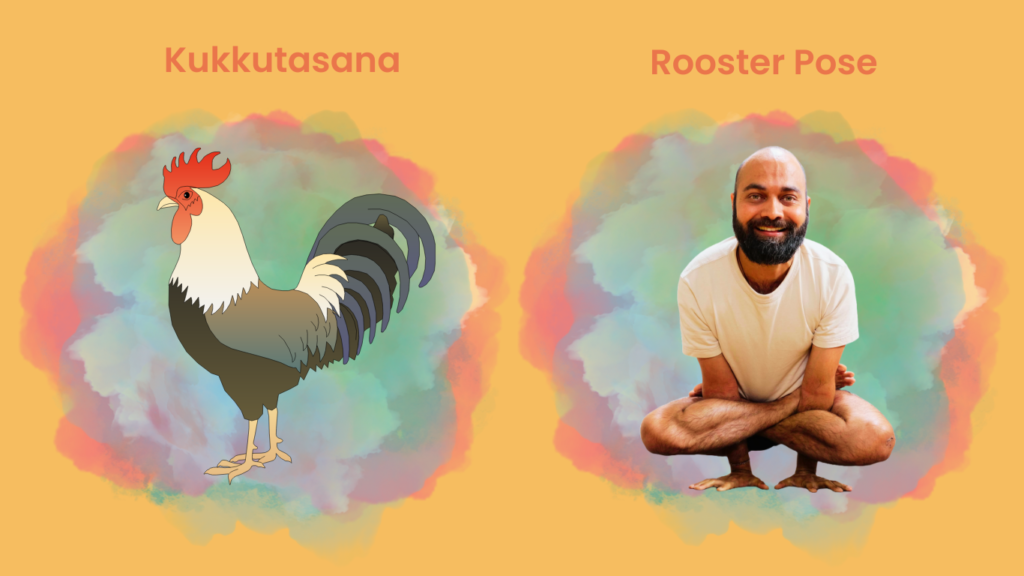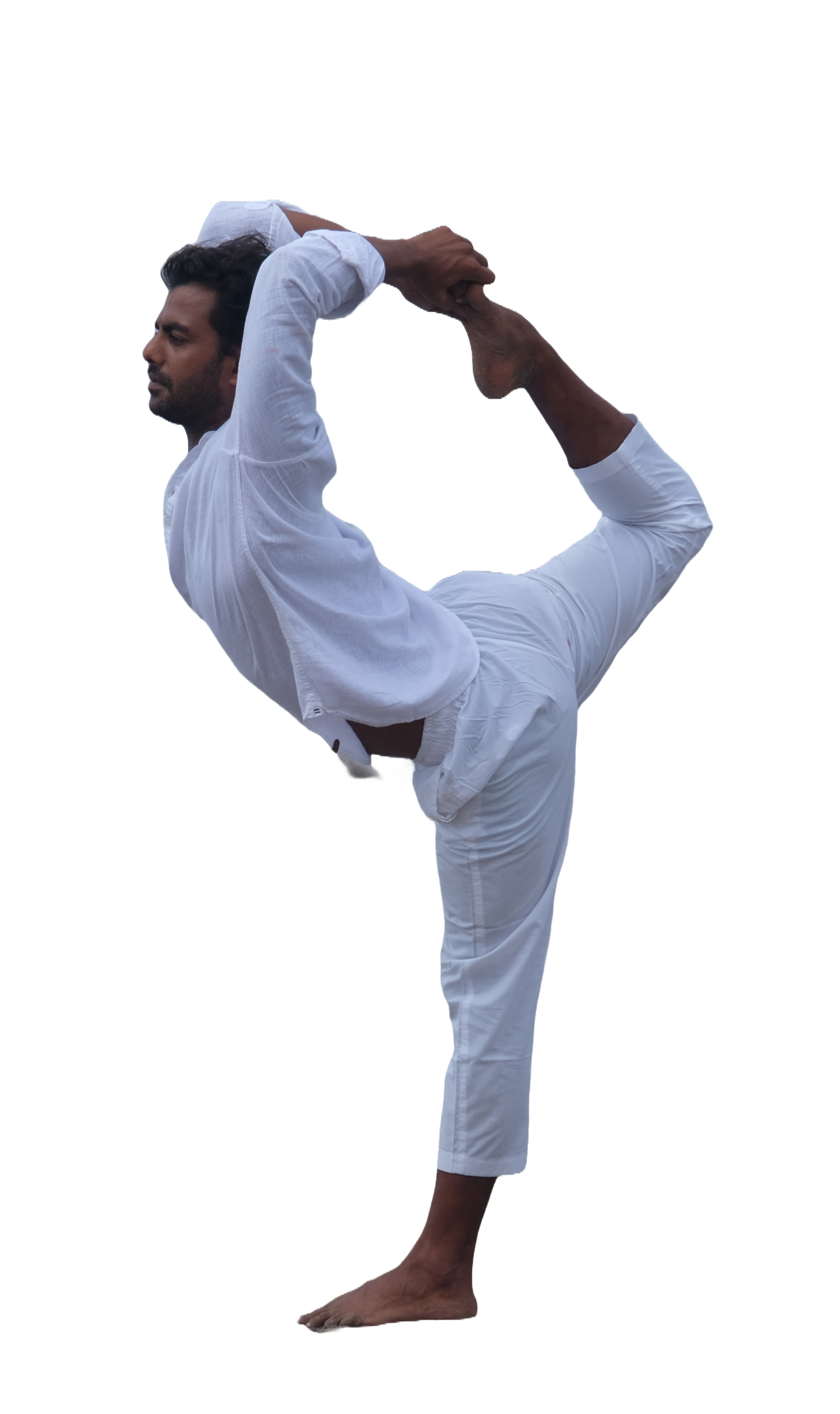-
-
Yoga Courses
Yoga Teacher Training India
Yoga Teacher Training Canada
Yoga Teacher Training Germany
Yoga Teacher Training Greece
Yoga Teacher Training Portugal
-
Yoga Retreats
-
YTTC Guide

Sanskrit: कुक्कुटासन
Kukkutasana, or Rooster Pose is one of the 32 postures mentioned in the Gheranda Samhita. In Hindu mythology, the rooster is associated with the god Murugan, the deity of war and victory, often depicted riding a rooster or with a rooster by his side.
Kukkutasana is a pose that has been practiced to enhance concentration, balance, and inner strength.
– Begin by sitting on the floor and bringing your legs into Padmasana, placing your right foot on your left thigh and your left foot on your right thigh.
– Carefully insert your hands between the gap created by your thighs and calves. Slide your hands all the way through until your elbows come out on the other side of your legs.
– Once your hands are through, place your palms firmly on the floor. Your fingers should be spread wide to create a stable base.
– Press firmly into your palms and begin to lift your body off the ground, using the strength of your arms to support your weight and your pelvic floor and the abdominals to pull up your hip. Your legs remain in the lotus position as you lift.
– Once you are balanced, hold the position, keeping your gaze forward. Maintain steady breathing and hold the pose for as long as comfortable.
– To release, slowly lower your body back to the ground and gently remove your hands from between your legs. Unwind your legs from the lotus position.
– Kukkutasana builds strength in the arms, shoulders, and wrists.
– Practicing Kukkutasana enhances hip flexibility due to the lotus position.
– Holding this challenging pose requires intense focus and concentration
– If you have a wrist, shoulder, or arm injuries you should avoid this pose due to the pressure it places on these joints.
– Those with knee problems should avoid this pose, especially if they have difficulty getting into or holding the lotus position.
– Pregnant women should avoid this pose due to the intense abdominal engagement.
– Those with hip injuries or tight hips may find it difficult to get into and hold the lotus position.
– Individuals with high blood pressure should avoid this pose.
Build Up to Lotus Pose:
– If you cannot comfortably sit in Padmasana, work on hip-opening exercises and gradually build up to the full lotus position.
Engage Your Core:
– Focus on engaging your core muscles to help lift and support your body weight.
Practice Arm Strengthening Exercises:
– Incorporate arm strengthening exercises into your practice.
Seek Guidance:
– Practice under the guidance of a qualified yoga instructor to ensure correct alignment and technique.
Learn Other Poses:
Popular Courses in Bali
200 hour Yoga Teacher Training in Bali | 300 hour Yoga Teacher Training in Bali | 500 hour Yoga Teacher Training in Bali | 50 Hours Yin Yoga Training in Bali | 50 hours Pranayama Training in Bali | 50 hours Yoga Nidra Training Bali | 50 hours Arm Balancing Training Bali | 100 hour Ashtanga Training Bali
Popular Courses in Germany
200 hour Yoga Teacher Training in Germany | 300 hour Yoga Teacher Training Germany | 50 Hour Yin Yoga Training Germany | 50 Hour Pranayama Training Germany | 50 hour Yoga Nidra Training Germany | 50 Hour Arm Balancing Training | 100 hour Ashtanga Training Germany
We are offering a special price for the first 6 registrations
per month!
